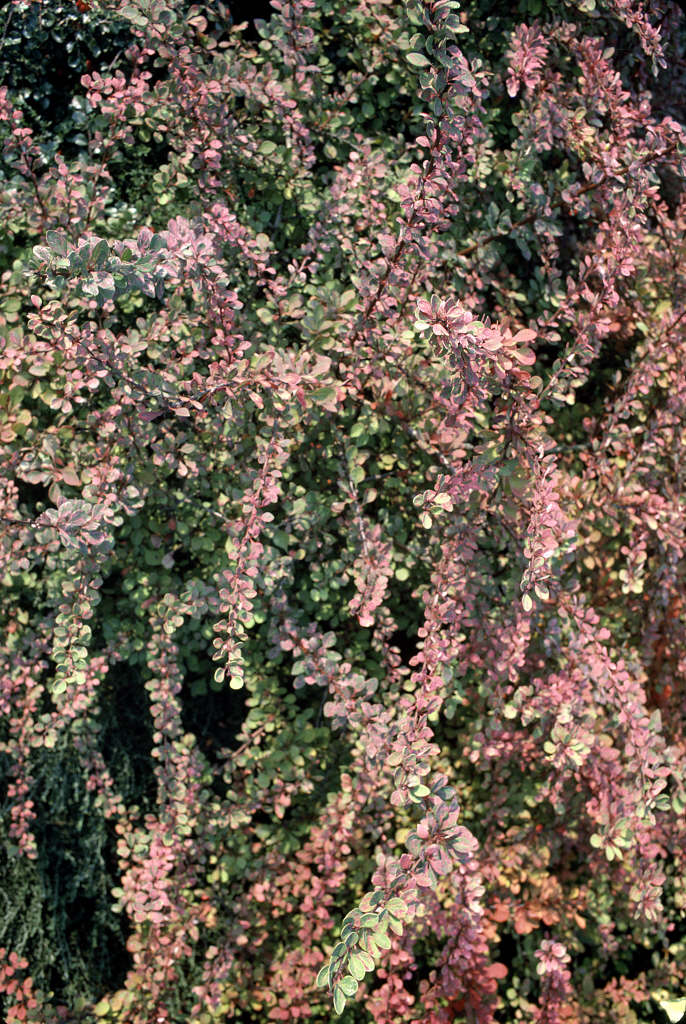Berberis thunbergii
Japanese barberry
Dense, rounded deciduous shrub about 1m tall, with spiny fresh green leaves, bluish-green beneath, to 3cm long, turning red and orange in autumn. Racemes of small yellow flowers, flushed red on sepals, are produced along the branches in mid spring, glossy bright scarlet berries follow
Size
Ultimate height
1–1.5 metresTime to ultimate height
5–10 yearsUltimate spread
1–1.5 metresGrowing conditions
Moisture
Moist but well–drained, Well–drainedpH
Acid, Alkaline, NeutralColour & scent
| Stem | Flower | Foliage | Fruit | |
| Spring | Red Yellow | Green | ||
|---|---|---|---|---|
| Summer | Green | |||
| Autumn | Orange Red | Red | ||
| Winter |
Position
- Full sun
- Partial shade
Aspect
South–facing or North–facing or West–facing or East–facing
Exposure
Exposed or Sheltered Hardiness
H7Botanical details
- Family
- Berberidaceae
- Native to GB / Ireland
- No
- Foliage
- Deciduous
- Habit
- Bushy
- Potentially harmful
- Fruit are ornamental - not to be eaten. Wear gloves and other protective equipment when handling. Pets: Fruit are ornamental - not to be eaten - see the HTA guide to potentially harmful plants for further information and useful contact numbers
- Genus
Berberis can be deciduous or evergreen shrubs with spiny shoots bearing simple, often spine-toothed leaves, and small yellow or orange flowers in axillary clusters or racemes, followed by small berries
- Name status
Correct
- Plant range
- Japan
How to grow
Cultivation
Grows in any soil except waterlogged, in sun or part shade. A sunny position will encourage fruiting and autumn colour, see berberis cultivation for further advice
Propagation
Propagate by seed or propagate from softwood or semi-ripe cuttings in summer
Suggested planting locations and garden types
- Coastal
- Cottage and informal garden
- Wildlife gardens
- Low Maintenance
- Hedging and screens
- Flower borders and beds
Pruning
Pruning group 2; trim hedges after flowering
Pests
May be susceptible to aphids and berberis sawfly
Diseases
May be susceptible to powdery mildews and sometimes by honey fungus
Get involved
The Royal Horticultural Society is the UK’s leading gardening charity. We aim to enrich everyone’s life through plants, and make the UK a greener and more beautiful place.
